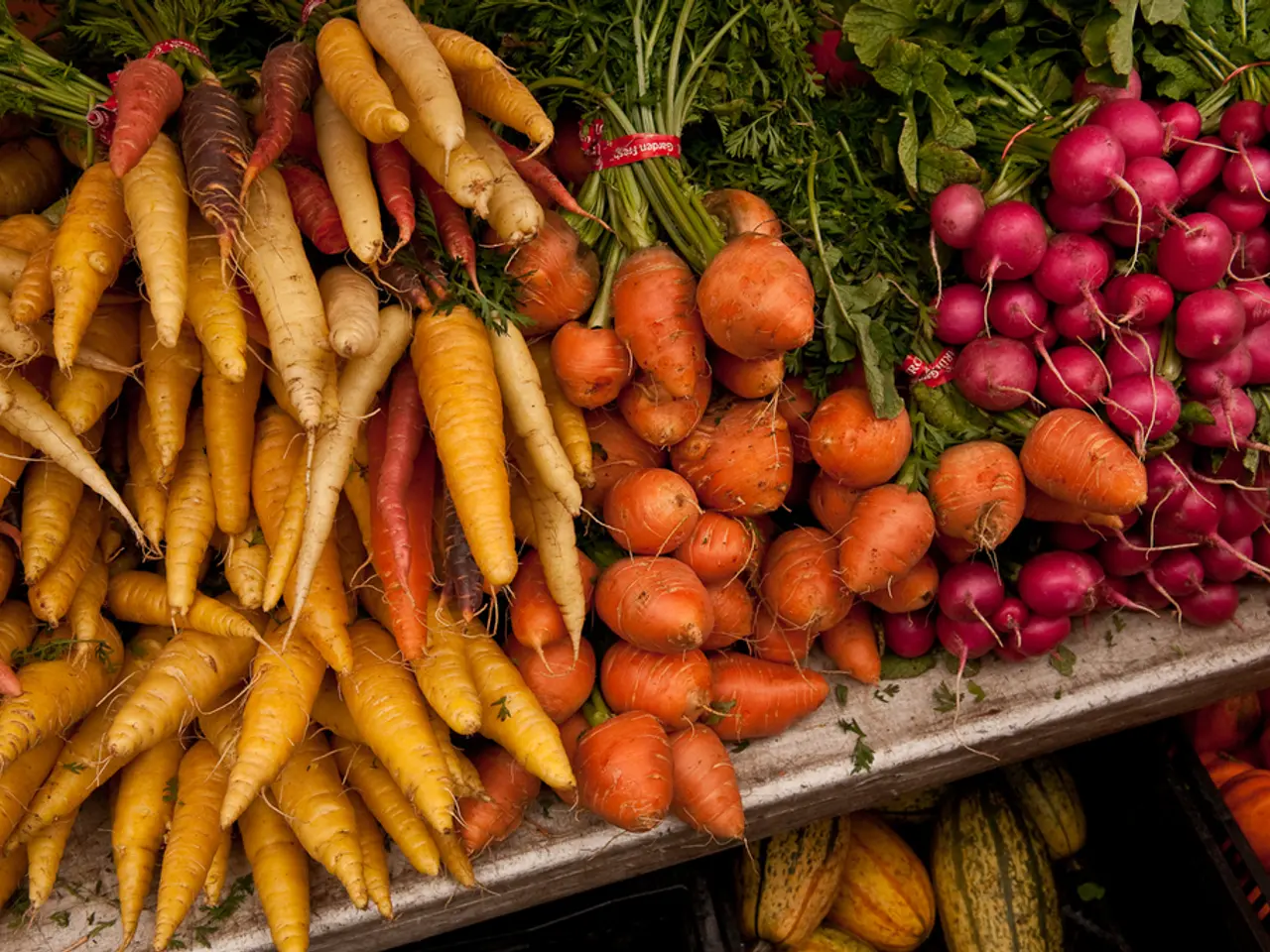Underground Storage Spaces: Exploring the Ambiance of Stored Areas
Storing crops for off-season sales and food security requires careful planning and consideration of temperature and humidity requirements specific to each type of vegetable. Here's a guide to help you optimize storage conditions for the vegetables listed:
Root Vegetables and Leafy Greens
- Beets and carrots: These root vegetables store best at temperatures around 32–40°F (0–4°C) with high relative humidity, about 90–95%, to keep them from drying out and losing crispness.
- Kale: As a leafy green, kale prefers cold temperatures near 32°F (0°C) and very high humidity, about 95%, to maintain freshness and prevent wilting.
Alliums
- Garlic: Store garlic at cold, near-freezing temperatures around 32°F (0°C) but in relatively dry conditions with 60–70% relative humidity, which inhibits sprouting and pathogen growth. Avoid too much moisture to prevent rot.
Tuber Vegetables
- Potatoes: Should be stored in a cool but not refrigerated environment, ideally around 45–50°F (7–10°C), with moderate humidity (about 85–90%) in a dark place to prevent sprouting and maintain texture. Avoid storing potatoes in the fridge, as cold temperatures cause them to become woody and can increase harmful compounds when cooked.
- Sweet potatoes: Like potatoes, sweet potatoes prefer warmer storage temperatures than root vegetables—around 55–60°F (13–16°C)—and high humidity (about 85–90%) but should not be refrigerated because cold damages their texture and flavor.
Winter Squash and Pumpkins
These store best at about 50–55°F (10–13°C) and moderate humidity (50–70%). They require dry conditions to prevent rot but enough humidity to avoid shriveling.
Additional Tips
- Separate onions and potatoes during storage to prevent ethylene gas from onions causing potato sprouting.
- Use breathable containers or storage spaces that moderate humidity levels naturally.
The critical period after crops go into storage requires observant care for temperature, humidity, and ventilation. By following these guidelines, you can balance moisture retention (to avoid shriveling/drying) with preventing rot and spoilage caused by too much humidity or warmth.
For more information about growing and storing vegetables for off-season sales and food security, consider reading "Beyond the Root Cellar: The Market Gardeners Guide to Growing and Storing Vegetables for Off-Season Sales and Food Security" by Sam Knapp.
| Vegetable | Temperature (°F) | Relative Humidity (%) | Notes | |------------------|------------------|----------------------|-------------------------------------| | Beets | 32–40 | 90–95 | High humidity to maintain crispness | | Carrots | 32–40 | 90–95 | Similar to beets | | Kale | ~32 | ~95 | Very high humidity for leafy greens | | Garlic | ~32 | 60–70 | Cool and dry to prevent sprouting | | Potatoes | 45–50 | 85–90 | Do not refrigerate, keep dark | | Sweet Potatoes | 55–60 | 85–90 | Avoid refrigeration | | Winter Squash | 50–55 | 50–70 | Dry but enough humidity to avoid shrivel | | Pumpkins | 50–55 | 50–70 | Similar to winter squash |
[1] Avoid too much moisture to prevent rot. [2] Separate onions and potatoes during storage to prevent ethylene gas from onions causing potato sprouting. [3] Do not refrigerate, keep potatoes in a cool but not cold environment. [4] Sweet potatoes cannot tolerate low temperatures and start accumulating chilling injury below 54°F.
- For optimal home-and-garden storage conditions, it's essential to follow careful planning to preserve the crispness of root vegetables like beets and carrots, with temperatures around 32–40°F (0–4°C) and high relative humidity, around 90–95%.
- Incorporating gardening practices in your lifestyle, you can store garlic at cold, near-freezing temperatures around 32°F (0°C) but in relatively dry conditions with 60–70% relative humidity to inhibit sprouting and pathogen growth.
- To maintain the texture and flavor of sweet potatoes, you should store them at warmer temperatures, around 55–60°F (13–16°C), and high humidity (about 85–90%), but ensure not to refrigerate them as cold damages their quality.





